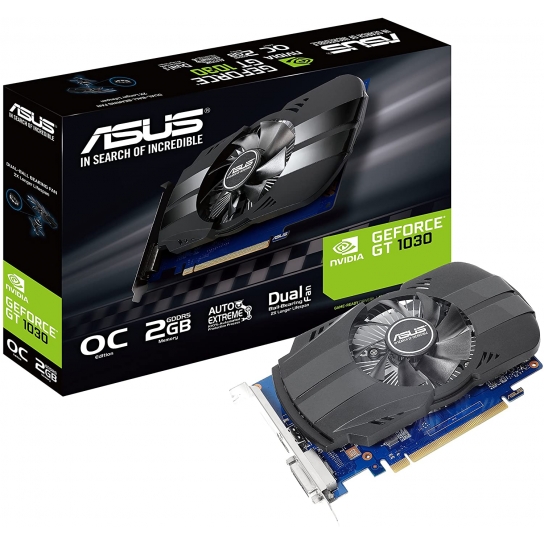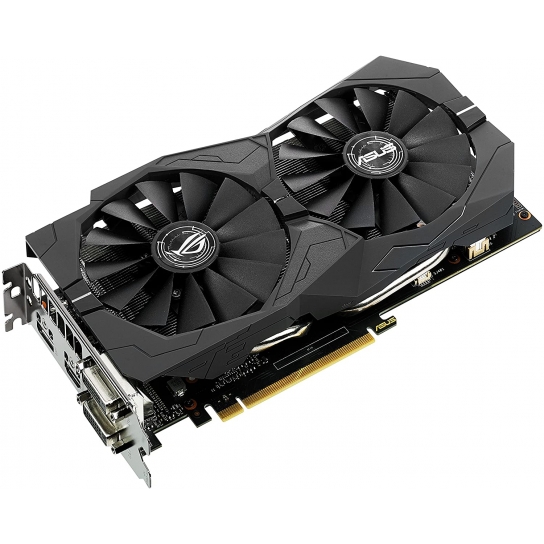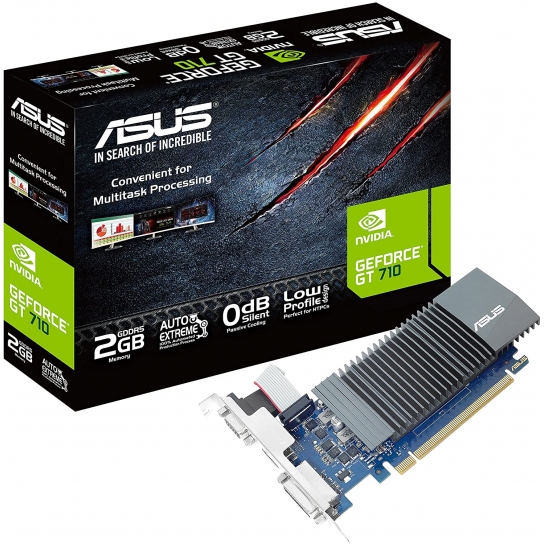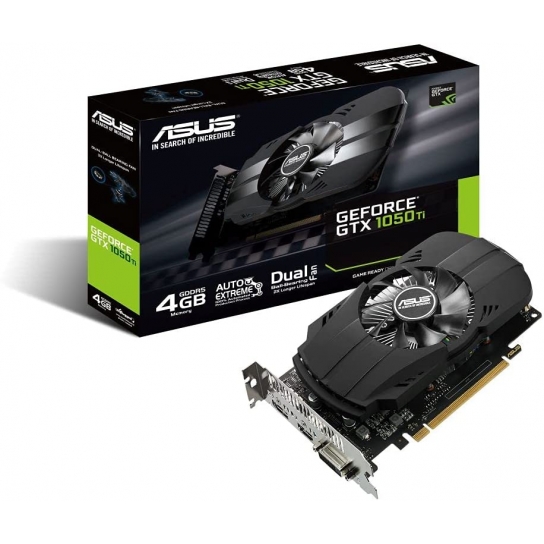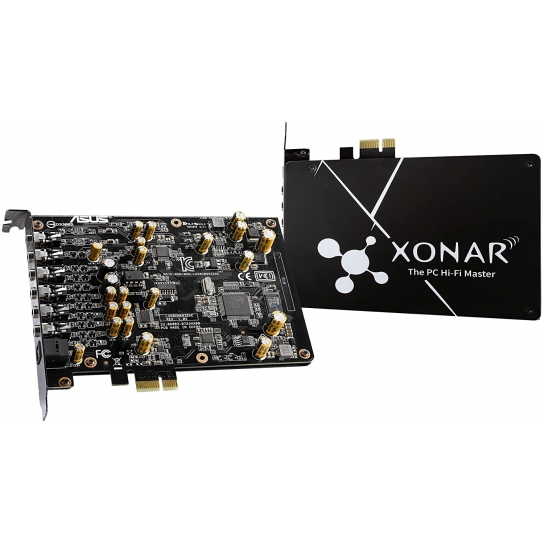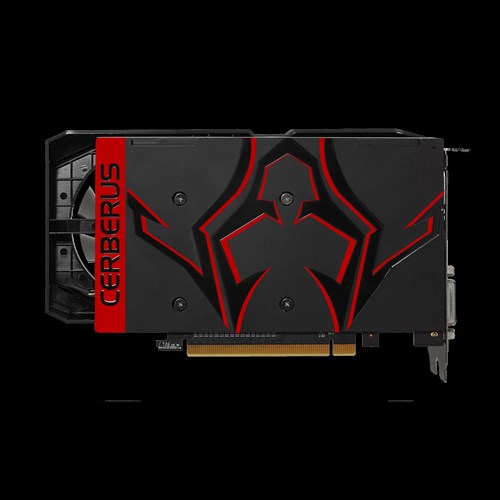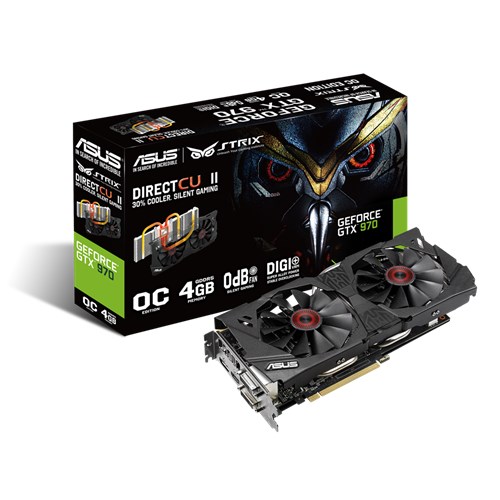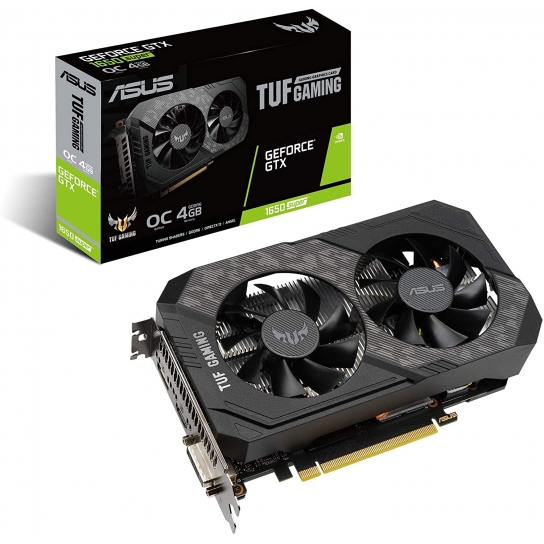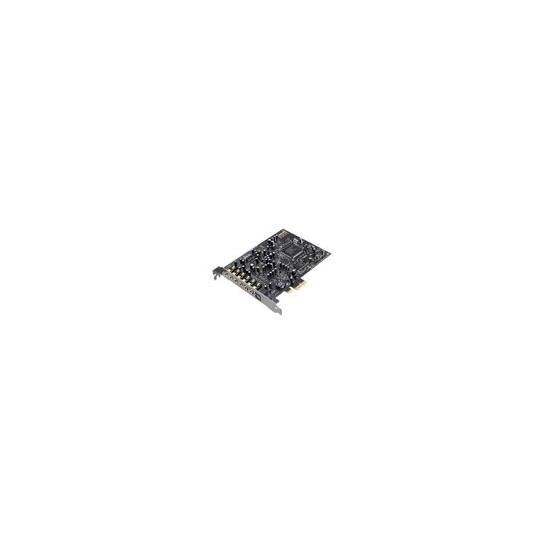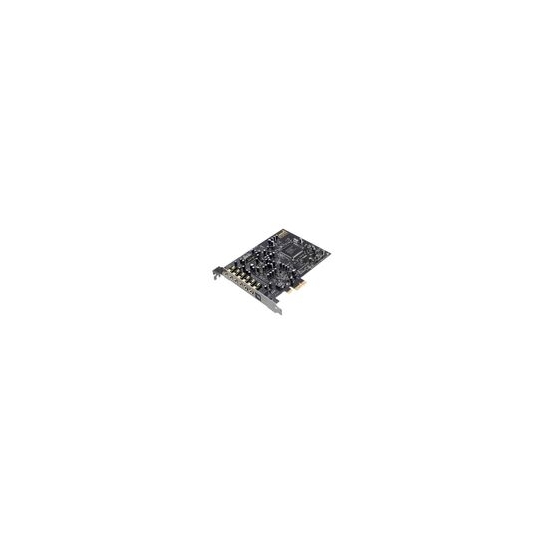ASUS
ASUS PH-GT1030-O2G ASUS Phoenix GeForceR GT 1030 OC edition 2GB GDDR5 Graphics Card
Best Graphics card for compact PC build and home entertainment.
Out of stock
Rs. 13890
Quantity:
SKU: PH-GT1030-O2G
Based on NVIDIA's Pascal architecture, the ASUS Phoenix GeForce GT 1030 OC Edition Graphics Card provides major improvements in performance, memory bandwidth, and power efficiency over its predecessor, the Maxwell architecture. The front panel of the card features a variety of outputs. There is one HDMI 2.0b output and one DVI-D output. The GTX 1030 is not just about high-resolution gaming: Computationally intensive programs can utilize the GPU's 384 cores to accelerate tasks using CUDA or other APIs. For cooling, ASUS implemented a single dual-ball bearing fan. The dual-ball bearing fan avoids the problem of oil drying, which is common in sleeve-bearing fans. With reduced friction, the dual-ball bearing fan improves the card's lifespan as well as the cooling efficiency. Specifications: GPU GPU Model NVIDIA GeForce GT 1030 Stream Processors 384 CUDA Cores Boost Clock Speed Gaming Mode: 1506 MHz OC Mode: 1531 MHz Base Clock Speed Gaming Mode: 1252 MHz OC Mode: 1278 MHz Interface PCI Express 3.0 x16 Supported APIs DirectX: 12 OpenGL: 4.5 CUDA Vulkan Memory Memory Speed 6.01 Gb/s Memory Configuration 2 GB Memory Interface GDDR5 Memory Interface Width 64-Bit Memory Bandwidth 48 GB/s Display Support Display Connectors 1 x DVI-D 1 x HDMI 2.0b Maximum Digital Resolution 1920 x 1200 Power Requirements Max Power Consumption 30 W PCI Power Connectors None Recommended System Power Requirement 300 W Dimensions Height 4.4" / 111.2 mm Length 7.3" / 185.4 mm Width Single-Slot
Newest Products
Safe Delivery
Deliverd with extra care
At your address
100% Genuine Items
We ensure best quality
100% vat bills
Customer Support 24/7
Instant access to
Support
After Sales Support
Buy from us and get
Personalized Support


